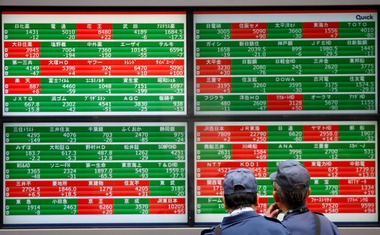An unpublished analysis by United Nations agencies and aid groups estimates some 350,000 people in Ethiopia’s conflict-torn Tigray region are in famine conditions, according to an internal UN document seen by Reuters on Wednesday.
The Ethiopian government disputes the Integrated Food Security Phase Classification (IPC) analysis, according to the notes of a meeting on the situation in Tigray of the Inter-Agency Standing Committee (IASC) – made up of the heads of at least 18 UN and non-UN organisations.
“On the risk of famine, it was noted that the unpublished IPC analysis figures were being disputed by the Ethiopian government, notably the estimated 350,000 people across Tigray believed to be in IPC 5 famine conditions,” the June 7 document read.
It also said the analysis, which diplomats said could be released publicly as soon as Thursday, had found that millions more across Tigray required “urgent food and agriculture/livelihoods support to avert further slides towards famine.”
UN aid chief Mark Lowcock chairs the committee, which includes the UN children’s agency UNICEF, the World Food Programme, the High Commissioner for Refugees, the World Health Organisation and the International Committee of the Red Cross
A senior Ethiopian diplomat in New York, speaking on condition of anonymity, confirmed the government disputed the analysis, questioning the survey methods and accusing the IPC of a lack of transparency and not enough consultation with relevant authorities.
The Ethiopian government’s emergency task force on Tigray, Prime Minister Abiy Ahmed’s office and the Foreign Ministry did not immediately respond to a request for comment.
‘ALARMING LEVELS’
Ethiopia’s Embassy in London said in a statement on Saturday that the government “takes its responsibility to end the current suffering of the people of Tigray very seriously and has so far made concerted efforts to comprehensively respond to the humanitarian needs on the ground, in coordination with local and international partners.”
Famine has been declared twice in the past decade – in Somalia in 2011 and in South Sudan in 2017, according to the IPC. UN agencies, aid groups, governments and other relevant parties use the IPC to work together to determine the severity of food insecurity.
Fighting in Tigray broke out in November between government troops and the region’s former ruling party, the Tigray People’s Liberation Front. Troops from neighboring Eritrea have also entered the conflict in support of Ethiopia’s government.
The violence in Tigray has killed thousands of people and forced more than 2 million from their homes in the mountainous region of more than 5 million.
The United Nations said on Wednesday there had been reported incidents of denial of the movement of aid and the interrogation, assault and detention of humanitarian workers at military checkpoints, along with looting and confiscation of humanitarian assets and supplies by the parties to the conflict.
“Levels of food insecurity and malnutrition are at alarming levels,” UN spokesman Stephane Dujarric said, adding there had been reports of starvation among displaced people, while there was a severe need for food in northwest Tigray after the burning or looting of harvests. He did not attribute blame.
Another UN spokesperson declined to comment specifically on the internal IASC notes.





















